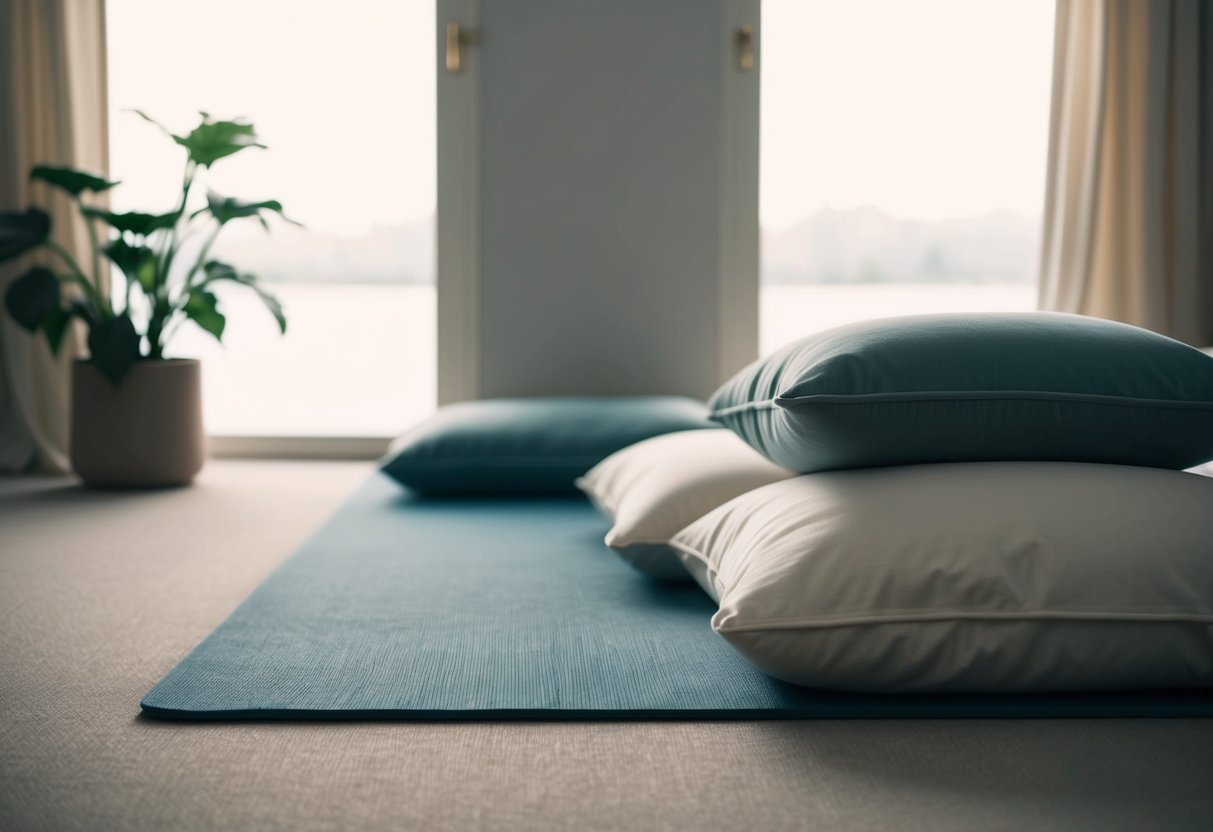DIY Sleep Yoga: Gentle Poses for Better Sleep Quality
Meditation and Deep Breathing Techniques

Meditation and deep breathing can play an essential role in improving sleep quality. By focusing on calming the mind and guiding the body into relaxation, these techniques contribute to both mental and physical well-being.
Breath Work for Calming the Mind
Breath work involves deliberate and focused breathing exercises designed to calm the mind and body. These exercises help to regulate the nervous system, bringing about a state of relaxation. One effective technique is the 4-7-8 method, where one inhales deeply through the nose for four counts, holds the breath for seven counts, and exhales slowly through the mouth for eight counts. This method encourages relaxation and can reduce stress, helping to prepare the body for restful sleep.
Another practice is diaphragmatic breathing, also known as belly breathing. By laying a hand on the stomach and feeling it rise and fall with each breath, individuals can focus on full, deep breaths that enhance relaxation. This form of breathing can lower heart rate and blood pressure, contributing to a sense of calm that is conducive to falling asleep.
Guided Meditation Practices
Guided meditation involves listening to verbal instructions provided by a narrator or teacher, which leads the participant through a series of calming visualizations and relaxation techniques. This practice can reduce mental clutter and anxiety, creating an environment more favorable for falling asleep. Techniques like body scan meditation guide users to focus on different areas of the body, releasing tension progressively.
Many guided sessions emphasize imagery that promotes peace, such as envisioning a serene beach or gentle forest setting. These visualizations, combined with soothing background music, help to lull the mind into a tranquil state. Regular practice can reinforce positive sleep patterns, making it easier to relax and drift off to sleep.
Addressing Common Sleep Issues with Yin Yoga
Yin Yoga can be an effective practice for improving sleep quality by addressing issues like insomnia and promoting deep relaxation. This gentle practice is designed to help individuals develop body awareness, which plays a crucial role in enhancing restful sleep.
Combatting Insomnia
Insomnia often disrupts sleep schedules, making it difficult for individuals to fall or stay asleep. Yin Yoga offers a soothing approach to manage these disruptions. Poses such as the Reclined Butterfly and Happy Baby encourage the body to release tension and stress accumulated throughout the day.
Holding these poses for extended periods allows muscles to relax completely, guiding the body and mind into a calmer state. This practice not only helps to calm the nervous system but also fosters a sense of inner peace, which can combat the restlessness associated with insomnia.
The emphasis on slow, mindful breaths enhances body awareness, encouraging individuals to focus internally instead of being sidetracked by external distractions. By creating a serene environment with minimal interruptions, Yin Yoga sets the stage for a peaceful transition to sleep.
Yin Yoga for Deep Relaxation
Deep relaxation is a cornerstone of Yin Yoga, which targets the deep connective tissues and fascia. This practice supports individuals in letting go of the day’s stress, facilitating a tranquil mindset that is conducive to sleep. Poses like the Supported Child’s Pose and Legs Up the Wall are particularly beneficial.
These positions encourage circulation and help in reducing physical and mental fatigue. By maintaining these poses, practitioners experience a profound state of relaxation that stimulates the parasympathetic nervous system. As a result, they achieve a restorative and rejuvenating sleep.
Yin Yoga fosters heightened body awareness, prompting individuals to listen and respond to their body’s needs. This practice empowers them to cultivate a harmonious sleep cycle, ultimately leading to improved sleep quality and overall well-being.



